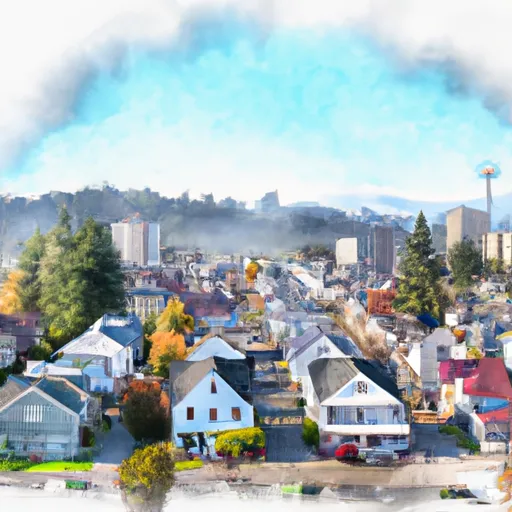-
 Snoflo Premium
Snoflo Premium
Get unlimited access to all our content
With no Ad interruptions! - Start Your Free Trial Login with existing account
Ravensdale
Eden Index
Climate
7.8
•
Recreation
3.8
•
Community
•
Safeguard
4.4/10

Ravensdale is a small town located in King County, Washington. It experiences a temperate marine climate, characterized by mild, wet winters and warm, dry summers. The average annual precipitation is around 43 inches, with rainfall spread throughout the year. Summers are pleasant with temperatures ranging from the mid-70s to low 80s Fahrenheit, while winters see temperatures in the mid-30s to mid-40s.
Hydrologically, Ravensdale benefits from the surrounding Cedar River. The river serves as a significant source of water for the region, providing opportunities for fishing, boating, and other water-based activities. Additionally, the area is dotted with small lakes and ponds, adding to the hydrological diversity of the region.
Outdoor enthusiasts can enjoy various recreational opportunities in Ravensdale. The nearby Tiger Mountain State Forest offers an extensive network of hiking and biking trails, allowing visitors to explore lush forests and enjoy stunning views. Additionally, Lake Wilderness Park, located a short drive away, provides opportunities for swimming, picnicking, and boating. The area's natural beauty and diverse landscapes make Ravensdale an attractive destination for outdoor recreation.
What is the Eden Index?
The Snoflo Eden Index serves as a comprehensive rating system for regions, evaluating their desirability through a holistic assessment of climate health, outdoor recreation opportunities, and natural disaster risk, acknowledging the profound impact of these factors on livability and well-being.
Climate Health Indicator (CHI): 7.8
Ravensdale receives approximately
1799mm of rain per year,
with humidity levels near 65%
and air temperatures averaging around
10°C.
Ravensdale has a plant hardyness factor of
8, meaning
plants and agriculture in this region tend to thrive here all year round.
By considering the ideal temperature range, reliable water supplies, clean air, and stable seasonal rain or snowpacks, the Climate Health Indicator (CHI) underscores the significance of a healthy climate as the foundation for quality living.
A healthy climate is paramount for ensuring a high quality of life and livability in a region, fostering both physical well-being and environmental harmony. This can be characterized by ideal temperatures, reliable access to water supplies, clean air, and consistent seasonal rain or snowpacks.
Weather Forecast
Streamflow Conditions
Puget Sound
Area Rivers
Puget Sound
Snowpack Depths
Puget Sound
Reservoir Storage Capacity
Puget Sound
Groundwater Levels
Recreational Opportunity Index (ROI): 3.8
The Recreational Opportunity Index (ROI) recognizes the value of outdoor recreational options, such as parks, hiking trails, camping sites, and fishing spots, while acknowledging that climate plays a pivotal role in ensuring the comfort and consistency of these experiences.
Access to outdoor recreational opportunities, encompassing activities such as parks, hiking, camping, and fishing, is crucial for overall well-being, and the climate plays a pivotal role in enabling and enhancing these experiences, ensuring that individuals can engage in nature-based activities comfortably and consistently.
Camping Areas
| Campground | Campsites | Reservations | Toilets | Showers | Elevation |
|---|---|---|---|---|---|
| Tolt MacDonald Park | 40 | 67 ft | |||
| Ipsut Creek - Mount Rainier National Park | 12 | 2,339 ft | |||
| Kanaskat Palmer Recreation Area | None | 884 ft |
Nearby Ski Areas
Catastrophe Safeguard Index (CSI):
The Catastrophe Safeguard Index (CSI) recognizes that natural disaster risk, encompassing floods, fires, hurricanes, and tornadoes, can drastically affect safety and the overall appeal of an area.
The level of natural disaster risk in a region significantly affects safety and the overall livability, with climate change amplifying these risks by potentially increasing the frequency and intensity of events like floods, fires, hurricanes, and tornadoes, thereby posing substantial challenges to community resilience and well-being.
Community Resilience Indicator (CRI):
The Community Resilience Indicator (CRI) recognizes that education, healthcare, and socioeconomics are crucial to the well-being of a region. The CRI acknowledges the profound impact of these elements on residents' overall quality of life. By evaluating educational resources, healthcare accessibility, and economic inclusivity, the index captures the essential aspects that contribute to a thriving community, fostering resident satisfaction, equity, and social cohesion.

